Weekly Weight Loss Workout Plan: A Step-by-Step Guide
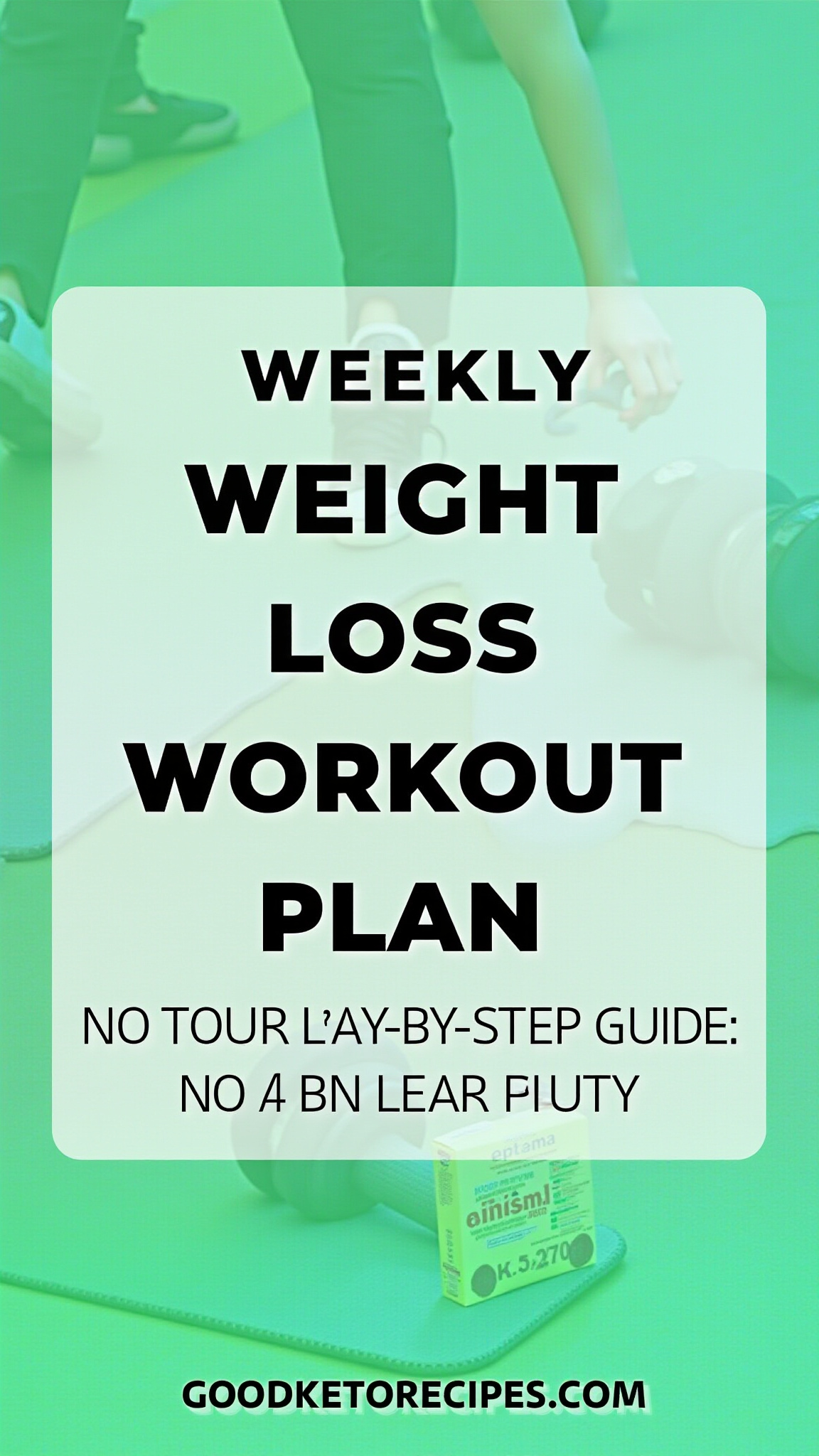
Losing weight is a journey, and a well-structured workout plan is your map to success. This comprehensive guide will walk you through creating a personalized weekly weight loss workout plan that aligns with your fitness level, goals, and lifestyle. We’ll cover everything from understanding your body and setting realistic goals to choosing the right exercises and staying motivated. Let’s get started!
1. Understanding Your Body and Goals
Before diving into exercises, it’s crucial to understand your current fitness level, body composition, and personal goals.
Assessing Your Fitness Level
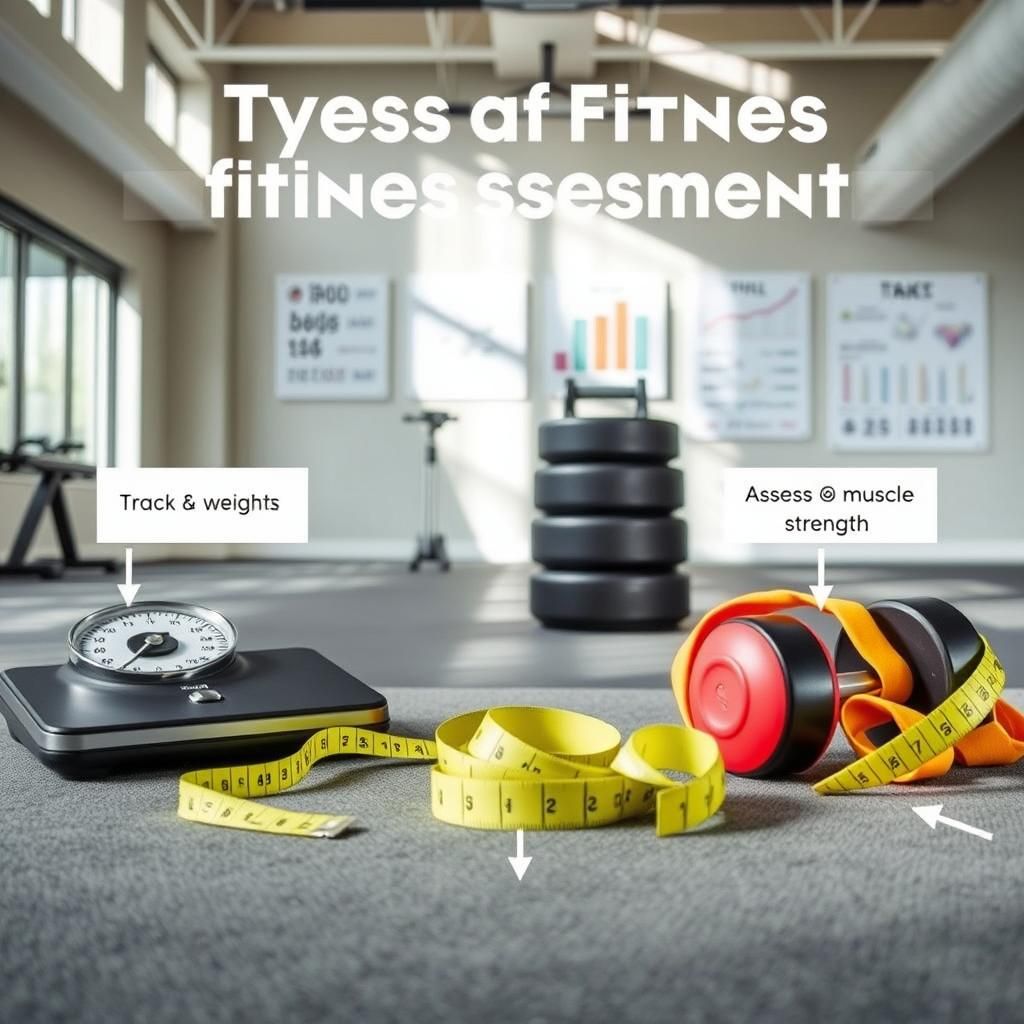
- Current Activity Level: Are you a beginner, intermediate, or advanced exerciser? Be honest with yourself. Starting too hard can lead to injury and burnout.
- Medical Conditions: Consult your doctor, especially if you have any pre-existing health conditions like heart disease, diabetes, or joint problems.
- Body Composition: While not essential, knowing your body fat percentage and muscle mass can help you track progress more effectively.
Setting Realistic Weight Loss Goals
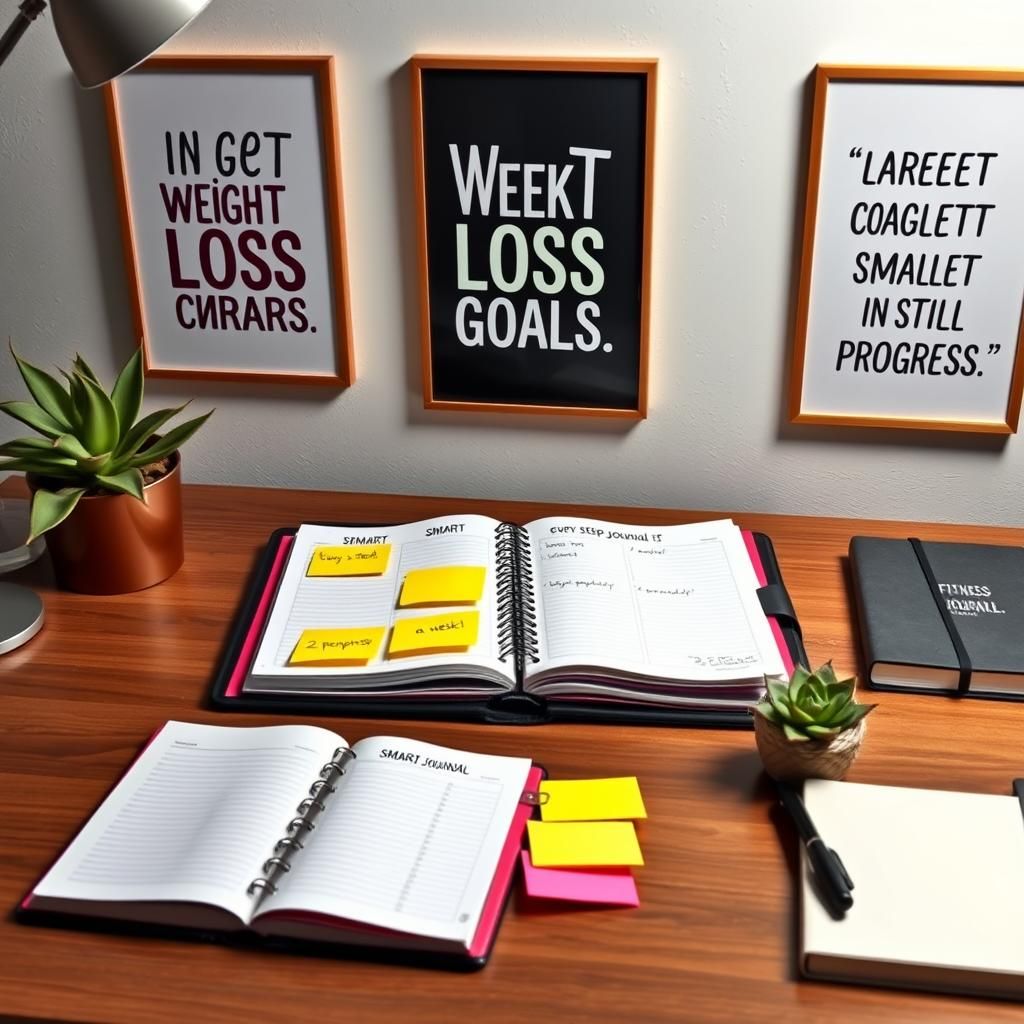
- Sustainable Weight Loss: Aim for a healthy and sustainable weight loss of 1-2 pounds per week. Rapid weight loss is often unsustainable and can be detrimental to your health.
- SMART Goals: Use the SMART framework (Specific, Measurable, Achievable, Relevant, Time-bound) to define your goals. For example, “I will lose 2 pounds per week for the next 12 weeks by following a structured workout plan and healthy diet.”
- Non-Scale Victories: Don’t solely focus on the number on the scale. Celebrate improvements in your strength, endurance, energy levels, and overall well-being.
2. The Pillars of a Weight Loss Workout Plan
A successful weight loss workout plan incorporates three key components: cardio, strength training, and flexibility/mobility work.
Cardiovascular Exercise (Cardio)
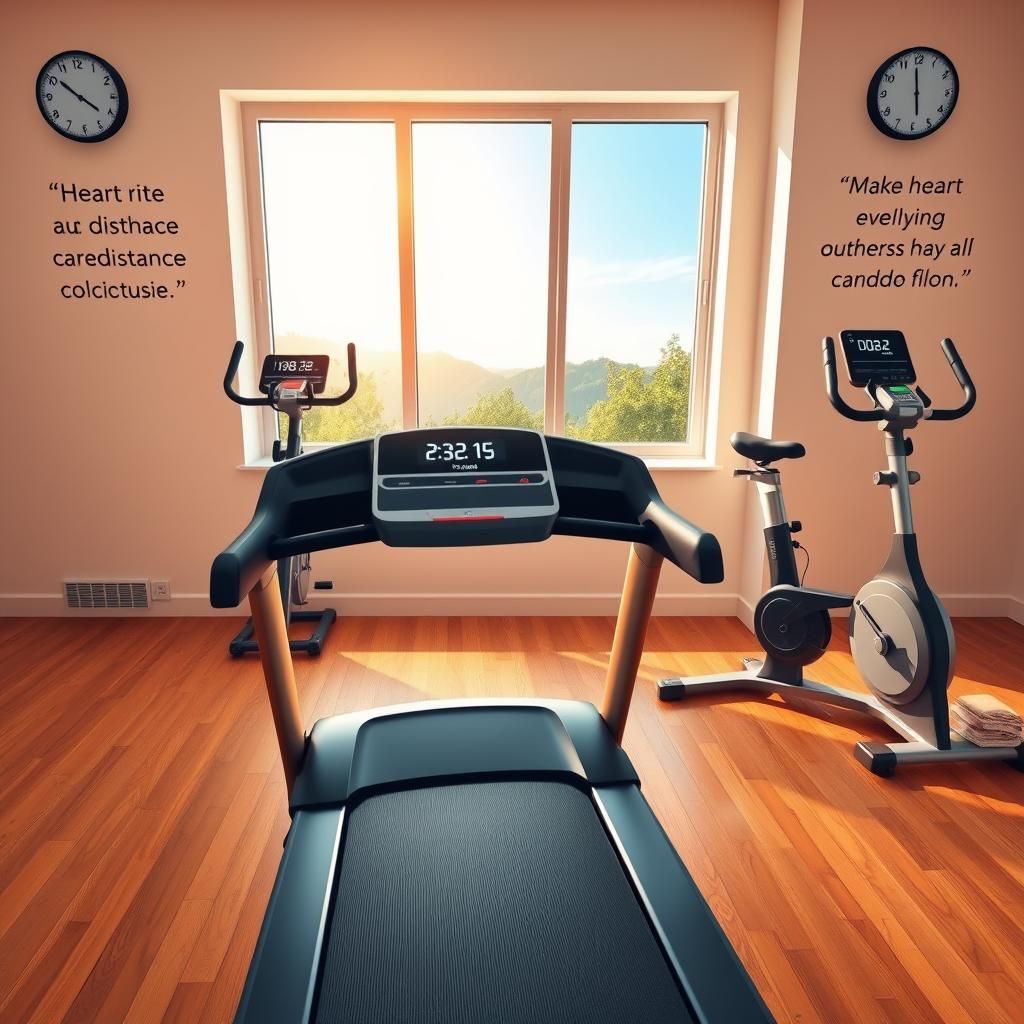
- What it is: Cardio exercises elevate your heart rate and burn calories, making them essential for weight loss.
- Benefits: Improves cardiovascular health, burns calories, boosts metabolism, and reduces stress.
- Types:
- Low-Impact: Walking, swimming, cycling (good for beginners or those with joint issues)
- High-Impact: Running, jumping jacks, HIIT (High-Intensity Interval Training)
- Recommendations: Aim for at least 150 minutes of moderate-intensity or 75 minutes of vigorous-intensity cardio per week, spread across multiple sessions.
- Examples:
- Brisk walking for 30 minutes, 5 days a week
- Jogging for 25 minutes, 3 days a week
- Cycling for 40 minutes, 4 days a week
Strength Training

- What it is: Strength training involves using resistance (weights, body weight, bands) to build muscle mass.
- Benefits: Boosts metabolism (muscle burns more calories than fat), improves bone density, enhances strength and endurance, and shapes your body.
- Types:
- Compound Exercises: Work multiple muscle groups simultaneously (e.g., squats, deadlifts, bench press, overhead press, rows).
- Isolation Exercises: Target specific muscles (e.g., bicep curls, tricep extensions, calf raises).
- Recommendations: Aim for 2-3 strength training sessions per week, targeting all major muscle groups (legs, back, chest, shoulders, arms, core).
- Examples:
- Full Body: Squats, push-ups, rows, overhead press, lunges
- Upper Body: Bench press, pull-ups (or lat pulldowns), bicep curls, tricep extensions
- Lower Body: Deadlifts, squats, lunges, calf raises
Flexibility and Mobility
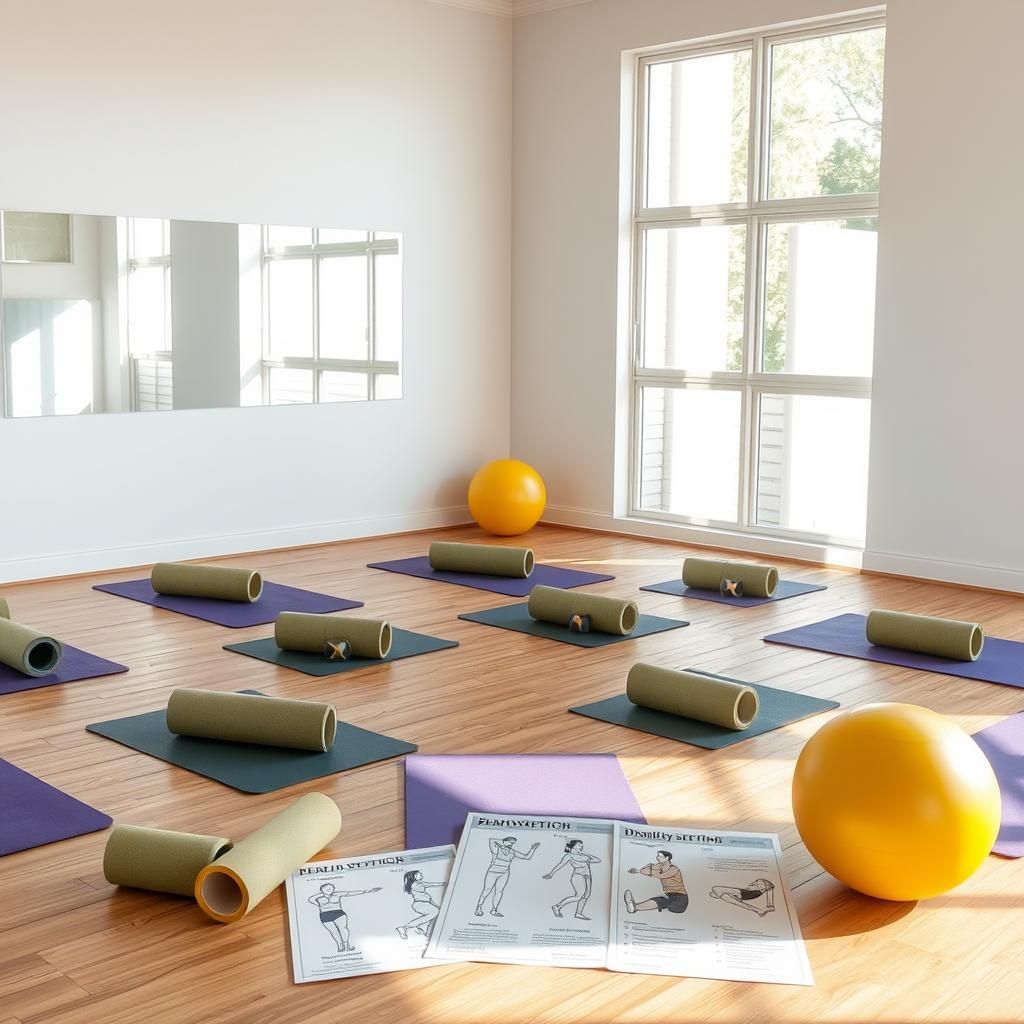
- What it is: Flexibility involves the range of motion of your joints, while mobility refers to your ability to move freely and efficiently.
- Benefits: Improves posture, reduces risk of injury, enhances performance, and promotes relaxation.
- Types:
- Static Stretching: Holding a stretch for a period of time (e.g., hamstring stretch, quadriceps stretch).
- Dynamic Stretching: Controlled movements that take your joints through their full range of motion (e.g., arm circles, leg swings).
- Foam Rolling: Self-massage to release muscle tension and improve flexibility.
- Recommendations: Incorporate flexibility and mobility exercises into your routine daily, either as part of your warm-up, cool-down, or as separate sessions.
- Examples:
- Yoga or Pilates
- Foam rolling major muscle groups
- Dynamic stretching before workouts
- Static stretching after workouts
3. Designing Your Weekly Workout Plan: A Step-by-Step Guide
Now, let’s put it all together and create your personalized weekly workout plan.
Step 1: Choose Your Workout Frequency
- Beginner: Start with 3-4 workouts per week.
- Intermediate: Aim for 4-5 workouts per week.
- Advanced: Can handle 5-6 workouts per week.
- Listen to Your Body: Rest and recovery are just as important as exercise. Don’t overtrain.
Step 2: Schedule Your Workouts
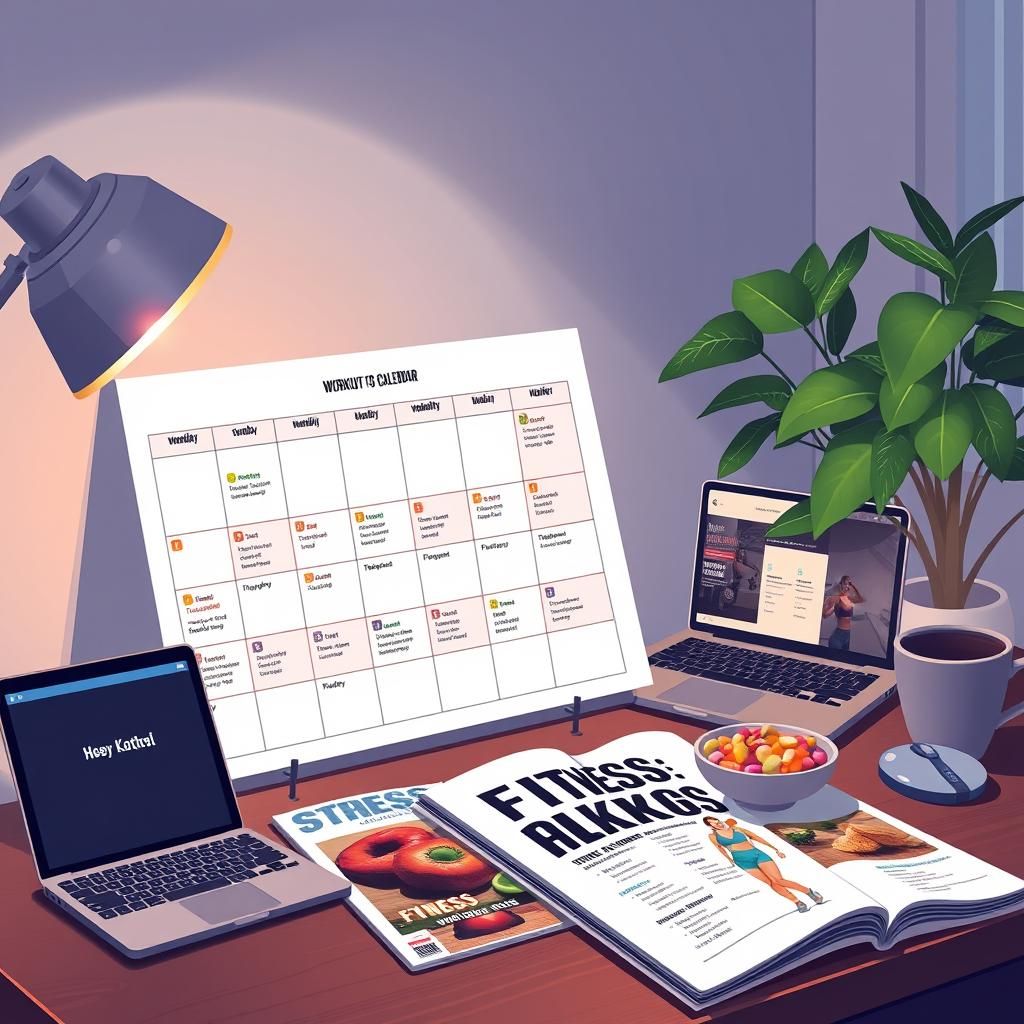
- Consistency is Key: Choose days and times that you can realistically commit to.
- Calendar It: Treat your workouts like important appointments and schedule them in your calendar.
- Consider Your Lifestyle: Factor in your work schedule, family commitments, and social activities.
Step 3: Select Your Exercises
- Cardio: Choose activities you enjoy and that fit your fitness level.
- Strength Training: Focus on compound exercises to maximize calorie burn and muscle building.
- Flexibility/Mobility: Incorporate exercises that target your tightest muscles and improve your overall range of motion.
Step 4: Determine Sets, Reps, and Rest
- Strength Training:
- Weight Loss: Aim for 2-3 sets of 12-15 reps with moderate weight.
- Muscle Building: Aim for 3-4 sets of 8-12 reps with heavier weight.
- Rest: Rest for 30-60 seconds between sets.
- Cardio:
- Moderate-Intensity: Maintain a heart rate that allows you to talk but not sing.
- High-Intensity: Push yourself to your maximum effort for short bursts followed by periods of recovery.
Step 5: Structure Your Weekly Plan
Here are a few sample weekly workout plans, tailored to different fitness levels:
Beginner (3 Workouts Per Week)
- Monday: Strength Training (Full Body)
- Squats: 2 sets of 12-15 reps
- Push-ups (on knees if needed): 2 sets of as many reps as possible
- Rows (with dumbbells or resistance band): 2 sets of 12-15 reps
- Overhead Press (with dumbbells): 2 sets of 12-15 reps
- Lunges: 2 sets of 12-15 reps per leg
- Plank: 2 sets, hold for 30-60 seconds
- Wednesday: Cardio (30 minutes brisk walking)
- Friday: Strength Training (Full Body) – Repeat exercises from Monday.
- Saturday/Sunday: Rest or light activity (yoga, stretching)
Intermediate (4 Workouts Per Week)
- Monday: Strength Training (Upper Body)
- Bench Press (or dumbbell chest press): 3 sets of 10-12 reps
- Pull-ups (or lat pulldowns): 3 sets of as many reps as possible
- Overhead Press (with dumbbells): 3 sets of 10-12 reps
- Bicep Curls (with dumbbells): 3 sets of 12-15 reps
- Tricep Extensions (with dumbbells): 3 sets of 12-15 reps
- Tuesday: Cardio (30 minutes jogging or cycling)
- Thursday: Strength Training (Lower Body)
- Squats: 3 sets of 10-12 reps
- Deadlifts: 1 set of 8 reps, 1 set of 10 reps, 1 set of 12 reps
- Lunges: 3 sets of 10-12 reps per leg
- Calf Raises: 3 sets of 15-20 reps
- Friday: HIIT (20 minutes) – Alternating between high-intensity exercises (e.g., burpees, mountain climbers, jumping jacks) and periods of rest.
- Saturday/Sunday: Rest or active recovery (yoga, swimming)
Advanced (5 Workouts Per Week)
- Monday: Strength Training (Chest and Triceps)
- Bench Press: 4 sets of 8-12 reps
- Incline Dumbbell Press: 3 sets of 10-12 reps
- Decline Dumbbell Press: 3 sets of 10-12 reps
- Close-Grip Bench Press: 3 sets of 10-12 reps
- Overhead Tricep Extension: 3 sets of 12-15 reps
- Tricep Dips: 3 sets of as many reps as possible
- Tuesday: Cardio (45 minutes running or cycling)
- Wednesday: Strength Training (Back and Biceps)
- Pull-ups (weighted if possible): 4 sets of as many reps as possible
- Barbell Rows: 3 sets of 8-12 reps
- Lat Pulldowns: 3 sets of 10-12 reps
- Seated Cable Rows: 3 sets of 10-12 reps
- Barbell Curls: 3 sets of 8-12 reps
- Hammer Curls: 3 sets of 12-15 reps
- Thursday: HIIT (30 minutes)
- Friday: Strength Training (Legs and Shoulders)
- Squats (Barbell Back Squats): 4 sets of 8-12 reps
- Deadlifts (Romanian Deadlifts): 3 sets of 8-12 reps
- Lunges (Walking Lunges with dumbbells): 3 sets of 10-12 reps per leg
- Overhead Press: 3 sets of 8-12 reps
- Lateral Raises: 3 sets of 12-15 reps
- Front Raises: 3 sets of 12-15 reps
- Saturday/Sunday: Rest or active recovery (swimming, yoga)
Step 6: Warm-Up and Cool-Down
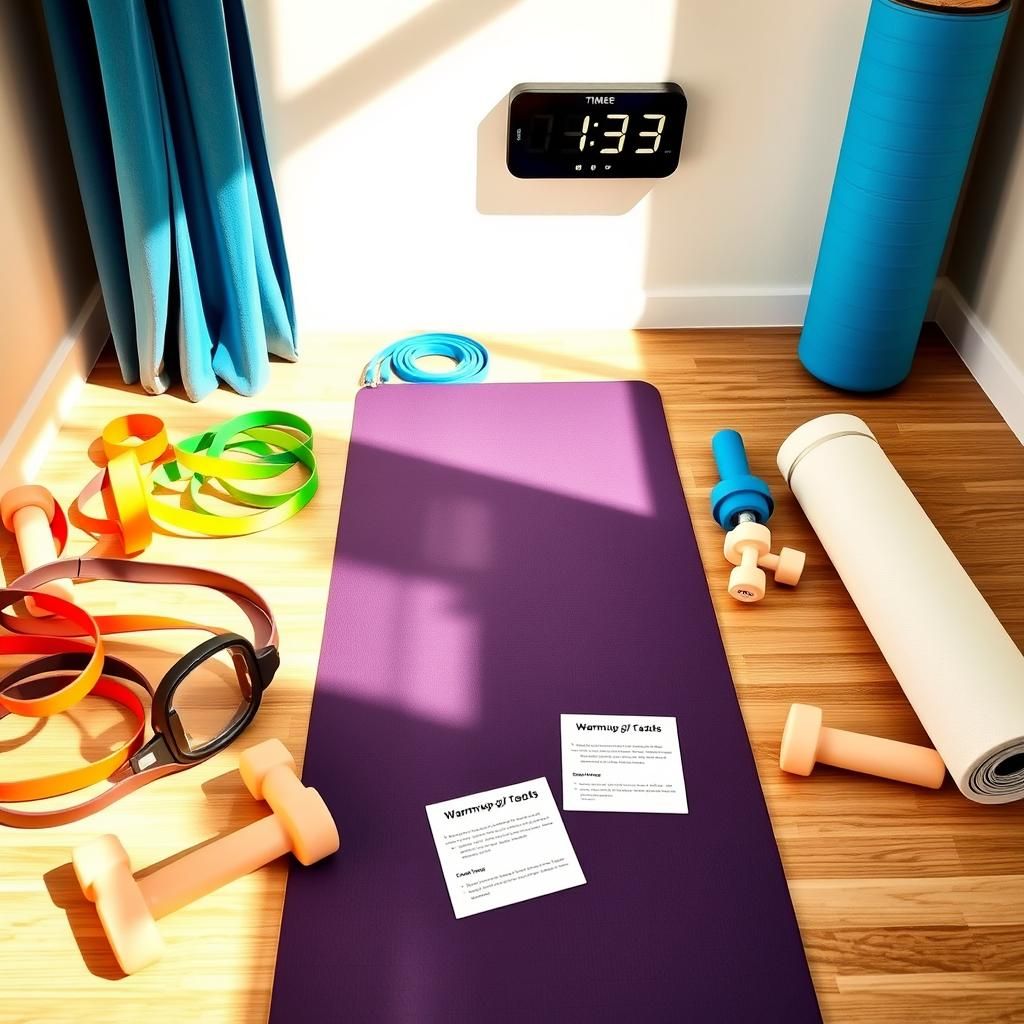
- Warm-Up: Prepare your body for exercise with 5-10 minutes of light cardio (e.g., jogging in place, jumping jacks) and dynamic stretching (e.g., arm circles, leg swings).
- Cool-Down: Gradually decrease your heart rate and stretch your muscles with 5-10 minutes of static stretching (e.g., hamstring stretch, quadriceps stretch).
4. Tracking Your Progress and Making Adjustments
Consistency and adaptability are key to long-term success.
Tracking Your Progress
![]()
- Workout Journal: Record your workouts, including exercises, sets, reps, weight, and how you felt.
- Progress Photos: Take photos of yourself every few weeks to track changes in your body composition.
- Measurements: Measure your waist, hips, and other body parts regularly.
- Body Weight: Weigh yourself once a week at the same time of day.
- Performance: Track improvements in your strength, endurance, and other fitness metrics.
Making Adjustments
- Plateaus: If you stop seeing progress, it’s time to make adjustments to your workout plan.
- Increase Intensity: Gradually increase the weight, reps, sets, or intensity of your workouts.
- Change Exercises: Introduce new exercises to challenge your muscles in different ways.
- Adjust Frequency: Increase or decrease your workout frequency based on your progress and recovery.
- Deload Week: Every 4-6 weeks, take a deload week where you reduce your training volume and intensity to allow your body to recover.
5. Nutrition and Hydration: The Foundation of Weight Loss

While exercise is crucial, nutrition plays an even bigger role in weight loss.
Caloric Deficit
- Burn More Than You Consume: To lose weight, you need to create a caloric deficit by burning more calories than you consume.
- Calculate Your Calorie Needs: Use an online calculator or consult a registered dietitian to determine your daily calorie needs.
- Track Your Calories: Use a food tracking app to monitor your calorie intake.
Macronutrients
- Protein: Essential for building and repairing muscle tissue. Aim for 0.8-1 gram of protein per pound of body weight per day.
- Carbohydrates: Provide energy for your workouts. Choose complex carbohydrates like whole grains, fruits, and vegetables.
- Fats: Important for hormone production and overall health. Choose healthy fats like avocados, nuts, and olive oil.
Hydration
- Drink Plenty of Water: Stay hydrated throughout the day, especially before, during, and after your workouts.
- Dehydration Can Hinder Performance: Even mild dehydration can impair your performance and make it harder to lose weight.
6. Staying Motivated and Consistent
Motivation ebbs and flows, so it’s important to develop strategies to stay consistent with your workout plan.
Find an Exercise Buddy
- Accountability: Working out with a friend or family member can help you stay motivated and accountable.
- Support: You can encourage each other and celebrate your successes.
Make it Enjoyable
- Choose Activities You Like: If you enjoy your workouts, you’re more likely to stick with them.
- Variety: Mix things up to prevent boredom.
- Music/Podcasts: Listen to your favorite music or podcasts while you exercise.
Reward Yourself (Non-Food)
- Celebrate Your Achievements: Reward yourself for reaching your goals with non-food rewards like a massage, new workout gear, or a weekend getaway.
Setbacks Happen
- Don’t Give Up: If you miss a workout or have a bad day, don’t give up. Just get back on track as soon as possible.
- Learn from Mistakes: Analyze what went wrong and make adjustments to prevent it from happening again.
7. The Role of Sleep and Stress Management
Adequate sleep and effective stress management are often overlooked but play crucial roles in weight loss.
Sleep
- Get Enough Sleep: Aim for 7-9 hours of sleep per night.
- Sleep Deprivation and Weight Gain: Sleep deprivation can increase hunger hormones, decrease metabolism, and make it harder to lose weight.
Stress Management
- Chronic Stress: Chronic stress can lead to increased cortisol levels, which can promote fat storage, especially around the abdomen.
- Stress Management Techniques: Practice stress management techniques like meditation, yoga, deep breathing exercises, or spending time in nature.
Creating a weekly weight loss workout plan is a journey, not a destination. It requires understanding your body, setting realistic goals, choosing the right exercises, and staying consistent. By incorporating cardio, strength training, and flexibility/mobility work into your routine, along with proper nutrition, hydration, sleep, and stress management, you can achieve your weight loss goals and improve your overall health and well-being. Remember to listen to your body, track your progress, and make adjustments as needed. The most important thing is to find a plan that works for you and that you can stick with long-term. Good luck on your weight loss journey!
Discover More Weight Loss Secrets!
Ready to take your weight loss journey to the next level? Check out these amazing resources!
Unlock the Power of Keto: The Ultimate Keto Meal Plan!Personalized Keto Just For You: Get Your Custom Keto Diet Now!
Affiliate Link Disclosure: Some of the links in this post are affiliate links. This means that if you click on the link and make a purchase, I may receive a small commission at no extra cost to you. I only recommend products or services that I personally use and believe will be valuable to my readers.






